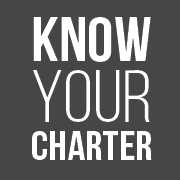
Short Changed Again
LOCAL SCHOOL DISTRICTS CONTINUE TO LOSE MONEY TO POOR-PERFORMING CHARTER SCHOOLS
The Ohio Charter School Accountability Project has conducted a new analysis of how charter schools are performing compared to local public schools and the financial impact on local school districts. This report is based on the recently released 2014-15 school report card data from the Ohio Department of Education. A look at both performance and funding reveals two key points:
- The vast majority of state charter funding is being transferred from good school districts to poor-performing charter schools; and
- Because of a broken funding system, local tax dollars from school districts are being forced to cover the cost of consistently underperforming charter schools.
The school choice movement was supposed to provide better educational choices for students, but a closer look at the numbers shows that this is often a false choice for most Ohio families. Here are just a few of those numbers:
- 72.5 percent of all state charter funding went to charters that DO NOT outperform the local school district.
- Nearly 1 in 3 charter schools receive all their state funding from higher performing local school districts.
- 50 percent of the charter dollars that leave the Youngstown Schools go to charters that perform worse on the state report card.
- 80 percent of all money sent to eSchools came from higher performing local school districts.
- 92 percent of Ohio school districts (563 of 609) received less per pupil state funding because of the way Ohio funds its charter schools.
In addition to understanding how much state aid leaves local school districts to support underperforming charter schools, SECTION 1 of this report also compares performance and funding in specific categories such as: Student Growth, Student Proficiency, Youngstown Schools, Big 8 Urban Districts, Non-Big 8 Districts, ECOT, eSchools, and Brick-and-Mortar charter schools.
SECTION 2 of this report shows how, because of the way Ohio funds charter schools, local school districts are being forced to subsidize mostly poor-performing charters. As reported in the Columbus Dispatch on Sept 9, this is a point lawmakers on both sides of the aisle recognize. This section also breaks down the 563 school districts that receive less per-pupil state funding because of the state’s charter funding system.
Lastly, it’s important to note that Ohio’s new Report Card data has been the subject of much controversy and protest. While the results indicate the same district to charter performance patterns as previous years, the Ohio Charter School Accountability Project recognizes that there are problems with the current report card data, such as significant discrepancies in the way tests were administered. These problems may make this year’s report card results less relevant for particular districts or schools. However, the overall comparative results between Ohio’s local public schools and charter schools are not appreciably different from prior years.
Read the full report here: Short Changed Again
